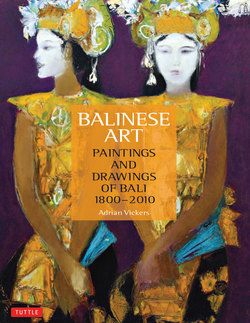Читать книгу Balinese Art - Adrian Vickers - Страница 9
На сайте Литреса книга снята с продажи.
ОглавлениеTraditional painting in Bali is a living art. While I Nyoman Mandra (1946–) is the leading artist of the ‘classical’ Kamasan school, dozens of artists still work in his village. Mandra comes from an important family of artists, as his maternal grandfather was Kaki Rambug, probably the best of the painters working in the late nineteenth and early twentieth centuries. Mandra’s uncle was I Nyoman Dogol, also one of the leading painters of his generation (Fig. 1).
Keeping alive the tradition of Kamasan art is Mandra’s main motivation, and his school of young painters is the chief vehicle for doing this. Remembering his impoverished childhood, when he studied from his uncle by sketching images in the sand, he established his studio as a teaching centre so that young people in the village would have ready access to painting methods, materials and techniques. When he was still young, Mandra and his family would walk dozens of kilometres to the areas to which tourists were just beginning to come. In the late 1960s and early 1970s, Kamasan painters would sell their work for approximately US$1 per painting, walking from the main road junctions to sites such as Padang Bai to the east, Sanur to the south and Ubud to the west, as the trickle of visitors to Bali gradually turned into a stream.
